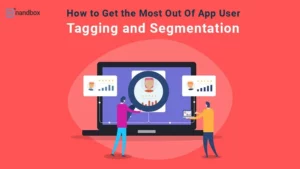Exploring the Power of Web Apps Builder
It is not deniable that applications have become a major part of our lives. It is a fact—a great one, even. Given that they take up much space in our daily lives, we have to be more knowledgeable about the endless world of mobile applications. So, did you know that you interact with three different types of mobile applications? Yes, you heard it right, yet we are unaware of it. However, the most common app type that we interact with is probably web apps. Well, this sounds like a familiar name, but not everyone knows about web apps. That is why, in this article, we will explore the exciting realm of web apps and how they started. We will also introduce you to the idea of a web apps builder who makes their development process as easy as pie.
What Are Web Apps? And The Evolution of Web Apps
Let us start by defining web apps briefly. Web applications are one of two other types of apps, which are native and hybrid. Web applications can be defined as a split image of a website or an online platform accessed through a mobile app. This means you can use them through an installed app instead of accessing them through a website. Keep in mind that many web apps are not available in app stores. So, what is the point of doing that anyway?
The concept behind a web app mainly lies in its functionality. Having a web app will give a website the look and feel of an application, which is known for providing more functions and flexibility. So, users can interact with the website with more functions and options. And this is exactly why many businesses and platforms go entirely with building web apps. In addition, they are easier to control and maintain and more affordable than building native or hybrid apps.
A web application is divided into two parts: the server side and the client side. The server side is where all the data is processed and executed for the user, and the client side is where the processed data is displayed and the user can interact with it.
The Evolution of Web Apps

If we are going to explore the evolution of web apps, we will have to mention and credit the launch of the World Wide Web. It gave website developers a chance to come up with the idea of web apps in the first place. The launch of the World Wide Web opened a gateway or portal for businesses and individuals. It provided them with an advanced tool that could help them reach billions of people around the world. These tools would be websites. Building websites is a must for businesses and organizations. It was an ideal tool to display products and services in an advanced way. At this time, the development process of websites was very humble compared to what we have now and relied entirely on HTML.
HTML allowed developers to build outstanding websites; however, it lacked some functionality and flexibility. Year after year, more tools, development methods, and programming languages emerged. Such as CSS and JavaScript, which gave web development more flexibility. But still, user demands and expectations increased, and developers aimed for more advanced tools. It wasn’t until the emergence of web frameworks like Angular that websites started to get more dynamic and effective. They paved the way for web apps. Since web apps have become more dynamic and intuitive, developers have thought of using the same frameworks to embed the functions and structure of a website into an application. Luckily, this method turned out to be successful, and many reputable platforms used it, like Facebook, Twitter, Gmail, YouTube, and many more.
Native Apps vs. Web Apps: Which is Better
Now that we have merely understood the concept of web apps and how they started, let us understand how they differ from other app types. For this comparison, we choose native apps, given that they are web apps’ main rival in the mobile app market now.
As we previously illustrated, a web app is the incorporation of a pre-existing website or online platform into an application with all its sections, pages, and functions. However, this website would look, behave, and perform like an application.
On the other hand, native apps can be the complete opposite. Native apps, as the name might imply, are applications that run directly on the device. They operate naively and have access to all the device’s systems and capabilities that support the app’s functionality.
Native apps, unlike many web apps, are only available through app stores. Some web apps need to be installed through the website or the platform themselves. Also, a native app can be accessed and operated offline, while on the other hand, web apps have to be connected to the internet to load all the data and function.
Does Google Play Store and Apple App Store Allow Web Apps?
Another question that we have to answer is whether the Google Play Store and Apple App Store allow web apps. Given that web apps can just be a method of displaying a website in an elegant and advanced way,. The Google Play Store allows the submission and publishing of web apps, as long as they follow other guidelines. These guidelines include clear functionality and appropriate content inside the app or website. After passing all the restrictions and technical guidelines, your web app has a great chance of getting approved on the Google Play Store.
However, the case with the Apple App Store is completely different and a tad difficult. The Apple App Store is known for its strict and firm guidelines. But when it comes to web apps, it becomes much more rigid. The chances of the Apple App Store approving a web app are the same as the chances of cats invading the world. It is attainable yet it can be impossible. Well, the first scenario is due to cats’ unbelievable laziness. However, the second scenario is due to guideline 4.2, which is associated with minimum functionality. Apple completely restricts apps that don’t offer users even the tiniest bit of functionality and features. As a result, the Apple App Store will never approve an app that is solely based on displaying a website.
Using Web Apps Builder: Is It Worth It?
Frameworks like Angular and React Native sure made the development of web apps streamlined. However, there were also some issues with the effort, time, and money exerted to build a web app. The issues were also associated with how complex the development project would get based on many factors like the size of the app, complexity, programming language and framework used, and so on. Businesses and developers would find themselves spending a lot just to come up with one web app.
Luckily, a new direction of web app development appeared that made everything easily attainable and possible. Ever heard of a web apps builder? A web app builder is a tool that is based on one of two development methods: low-code app development or no-code app development. A builder for web apps offers developers everything that they would need to create a web app in a fraction of the time compared to building the standard way. For businesses looking to create robust and scalable web applications, utilizing professional web portal development services can provide customized solutions tailored to specific business needs, ensuring a seamless user experience and optimal functionality. Well, isn’t that what the framework does? A tool that has all libraries, APIs, languages, and everything a developer would need? Yes, but the major difference is that a builder for web apps involves no coding and doesn’t require any coding knowledge to deal with.
There are many builders for web apps, low-code or no-code, that serve as a lifesaving option for businesses. As they not only help them display their websites through an application, but they also help them add more functions to create a unique experience.
Characteristics of a Good Builder
There are some characteristics of an effective builder for web apps that you should know before settling on one. So, let us list a few
Drag-and-Drop Interface
The first characteristic that has to be there is a drag-and-drop interface. It is a simple interface that lets users visually build the app’s layout by dragging and dropping objects such as buttons, forms, features, and media onto a design area or app canvas.
Pre-built Templates and Components
The second characteristic is pre-made functions and elements. This provides developers with a library of pre-designed elements, modules, components, and templates to incorporate into their applications, eliminating the need to code from the ground up.
Visual Development Environment
No matter where you are in the process of creating an app, visuals are paramount. Without having to write a line of code, developers should be able to design, configure, and personalize the app’s workflows, user interfaces, and functionality with an advanced visual development environment.
Integration Capabilities
Lastly, as we spoke about minimum functionality and design restrictions. A builder for web apps should have endless capabilities for expanding functionality. A web apps builder should provide integrations with databases, APIs, and other tools so developers can link their app to different sources of information and third-party applications without having to compose and deal with backend code.
Should You Consider nandbox as a Builder For Your Next App?
Now you may have an idea or two about nandbox. But if you don’t, let me give you a brief glimpse. nandbox is a leading no-code app builder. It specializes in building native apps and is considered to be the only native app builder on the market. Now, we can understand that nandbox is heavily associated with native apps. So how could it be an option for building web apps? nandbox realizes the need for many businesses and individuals to build web apps. Thus, they included an advanced feature that allows developers to build web apps with native functionality. The web-view feature is what makes nandbox an idea builder for web apps and allows developers to create a web app that totally abides by app store guidelines and can be seamlessly published.
This feature allows developers to include the structure, pages, and all sections of their websites and display them through a sleek and modern application. Additionally, they can include more features and functions that would create a one-of-a-kind experience. All of this and more can be easily accomplished through nandbox without taking a toll on a business’s resources, budget, or time, as the development process in nandbox is affordable and takes no time! Save more time and try the nandbox app builder now for the best web apps building experience







